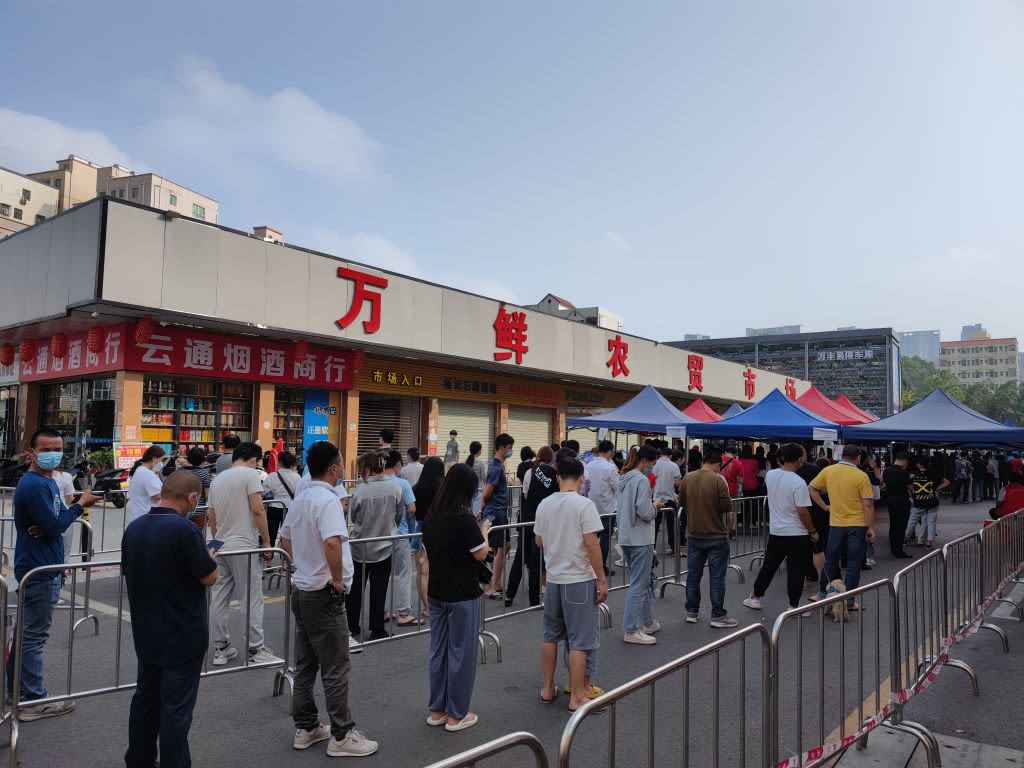What to Know
- BA.2 is a more-infectious offshoot of the omicron variant that fueled the recent winter surge in infections.
- Overall, COVID cases and hospitalizations have been dropping in LA County, but the proportion of BA.2 cases is rising.
- That percentage is still low, the same pattern was seen with the omicron and delta variants that both grew into major spreaders of the virus.
Los Angeles County will likely see an uptick in case of the BA.2 COVD-19 sub-variant, mirroring a pattern seen overseas and in some East Coast cities, health officials say.
BA.2, which is a more-infectious offshoot of the Omicron variant that fueled the recent winter surge in infections, is slowly beginning to expand locally.
Here’s what to know about the sub-variant.
Get Southern California news, weather forecasts and entertainment stories to your inbox. Sign up for NBC LA newsletters.
How many cases of BA.2 have been detected in LA County?
It's the rising proportion of BA.2 cases that stands out. During the week ending Feb. 26, 6.4% of all COVID specimens that were analyzed for variants turned out to be the result of BA.2. That was up from 4.5% the week prior.
For the week ending March 5, BA.2 accounted for 14.7% of all specially sequenced cases -- more than double the 6.4% rate from the previous week.
Health officials noted that while the percentage is still low, the same pattern was seen with the Omicron and Delta variants that both grew into major spreaders of the virus. They said BA.2 is currently estimated to be responsible for 23% of sequenced cases nationally, while representing 30% of infections in New York City.
"Although most of our metrics continue to improve, the county continues to see substantial transmission,'' county Public Health Director Barbara Ferrer said. ``Along with the increasing circulation of the more-infectious BA.2 subvariant, everyone, especially those who are at elevated risk or live with someone at elevated risk, should wear a high-quality mask and get vaccinated and boosted.''
In the U.S., the latest data from the Centers for Disease Control and Prevention shows overall COVID-19 cases have been trending down. But the share caused by BA.2 is up significantly. The sub-variant accounted for about 35% of new infections reported last week.
In the Southwestern U.S., which includes California, BA.2 made up an estimated 41% of coronavirus samples up fro 28 percent the previous week, according to federal figures.
Overall, cases, deaths and hospitalizations related to COVID-19 have been steadily falling in Los Angeles County. The number of COVID-19-positive patients in Los Angeles County hospitals fell below 400, according to the latest data, reaching a level not seen since early last July,
What is BA.2?
BA.2 is a “sub-lineage'' of the omicron coronavirus variant. It is widely considered stealthier than the original version of omicron because particular genetic traits make it somewhat harder to detect.
“It’s not a variant on its own, it’s a sub-variant of omicron,” said Dr. John Torres, NBC News senior medical correspondent. “Omicron, when it first came out, was the BA.1 variant. Then we have the sub-variant, which it BA.2, meaning it has changed a little bit.”
BA.2 has many mutations. Some are shared with the original omicron. But it also has additional genetic changes not seen in the initial version. It's unclear how significant those mutations are, especially in a population that has encountered the original omicron, health experts say.
For now, the original version, known as BA.1, and BA.2 are considered subsets of omicron. But global health leaders could give it its own Greek letter name if it is deemed a globally significant “variant of concern.” If, that is, it actually becomes a variant.
How contagious is BA.2?
One reason the sub-variant has gained ground, scientists say, is that it’s about 30% more contagious than the original omicron.
Confirmed cases of the virus had been falling steadily worldwide since January but rose again last week, due to the more infectious omicron variant and subvariant BA.2, in addition to the suspension of COVID-19 protocols in numerous countries in Europe, North America and elsewhere.
It’s definitely something to be aware of, but not necessarily something to be concerned about. The main point is, don’t throw away your masks yet.
Dr. John Torres, NBC News senior medical correspondent
"BA.2 is so similar to BA.1," Torres said. "It seems to be more infectious, meaning people can catch it more, but it doesn’t seem to be any more dangerous and it doesn’t seem to get around the vaccines or the treatments any more so than omicron.
“But because it is a little bit different and because it has a contagious factor, we think numbers will go up.”
Torres said it will likely be a slow burn, with cases going up very slowly over a long period of time.
“It’s definitely something to be aware of, but not necessarily something to be concerned about.” Torres said. "The main point is, don’t throw away your masks yet.”
What does BA.2 mean for people previously infected?
Doctors don’t yet know for sure if someone who’s already had COVID-19 caused by omicron can be sickened again by BA.2. But they’re hopeful, especially that a prior omicron infection might lessen the severity of disease if someone later contracts BA.2.
The two versions of omicron have enough in common that it’s possible that infection with the original mutant "will give you cross-protection against BA.2,” said Dr. Daniel Kuritzkes, an infectious diseases expert at Brigham and Women’s Hospital.
Can we expect a BA.2 surge?
Dr. Anthony Fauci, the U.S. government’s top infectious disease expert, told ABC’s “This Week” over the weekend that he also thinks the U.S. will likely face an “uptick” similar to what’s happening in Europe, particularly the United Kingdom, where BA.2 is the dominant strain. He said he doesn’t think it will be a “surge.”
The U.K. has "had the same situation as we’ve had now,” Fauci said. “They have BA.2. They have a relaxation of some restrictions such as indoor masking and there’s a waning of immunity” from vaccines and past infections.
NBCLA's Jonathan Lloyd contributed to this report.



